
Android 15 release date
Google has released the schedule for the new Android development. We can look forward to the first beta versions around April to May. The release candidate versions are expected in June and July, with the final release likely in September or October, alongside a new Pixel 9 family.

That said, many companies are still updating their phones to Android 14 and will probably begin working on Android 15 developer programs later in the year. Here’s what we’ve seen from Google in previous years:
Past Android release schedules
| Version | Announcement / Preview | Beta | Release Candidate | Stable release |
|---|---|---|---|---|
| Android 15 (2024) | February (DP1) | April – June | June – July | August -October |
| Android 14 (2023) | February (DP1) | April | June (Beta 3) | October |
| Android 13 (2022) | February (DP1) | April | July (Beta 4) | August |
| Android 12 (2021) | February (DP1) | May | September (Beta 5) | October |
| Android 11 (2020) | February (DP1) | June | August (Beta 3) | September |
| Android 10 (2019) | March (Beta 1) | March | August (Beta 6) | September |
Android 15: How is it to be called? Is there a new dessert name?
We know Google went back to only using numbers for its system versions, but the tradition of dessert nicknames continues among the development team, where it all started, after all.
After Android 14’s exotic ‘Upside-Down Cake’, Android 15 will keep things simple, with a dessert name confirmed way back in March 2023: ‘Vanilla Ice Cream’.

But as mentioned above, don’t expect to see Google using the dessert codename in the official marketing materials. The company is expected to stick to its simple and straightforward “Android 15” branding.
Another old-school tradition that should return in 2024 is the Android statues, Android 14 got its Upside-Down Cake statue as shared by Dave Burke, Google’s vice president of engineering. And Vanilla Ice Cream shouldn’t be different.

Android 15: New features
With the developer preview 1 release, we’ve seen some evidence of upcoming Android 15 features. However, as we’re in the early stages of Android 15 development, we should be careful about which features might make it to the final version. Some features could be canceled, delayed to a future major update, or added in the next regular update.
As we dive into the first developer preview of Android 15, it is important to note that this stage allows developers to test and refine the system for the next build. But it’s not just about the backend; there are exciting hints about what everyday users can look forward to. Here’s what we know right now.
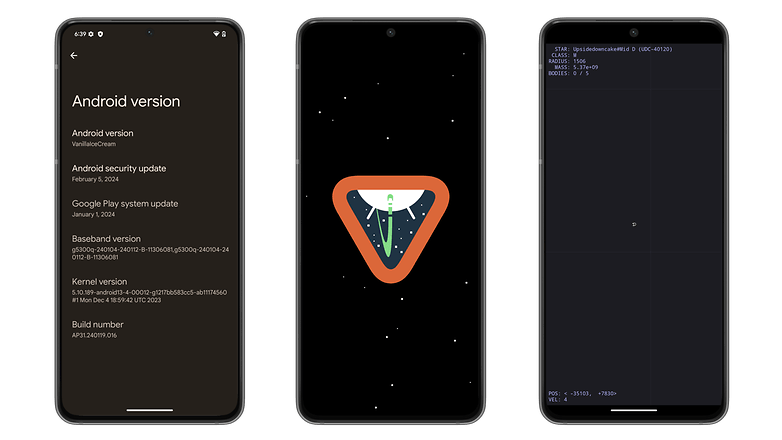
Android 15 features confirmed by the developer preview:
Auracast audio sharing via Bluetooth
One of the coolest new features launched with the Bluetooth LE Audio specification, besides the more efficient LC3 codec, is the option to stream from one source to multiple headphones and/or speakers. The feature, known as Auracast, is usually exemplified through a public space offering a collective audio stream in a museum or stadium, but it can also be used on personal devices.
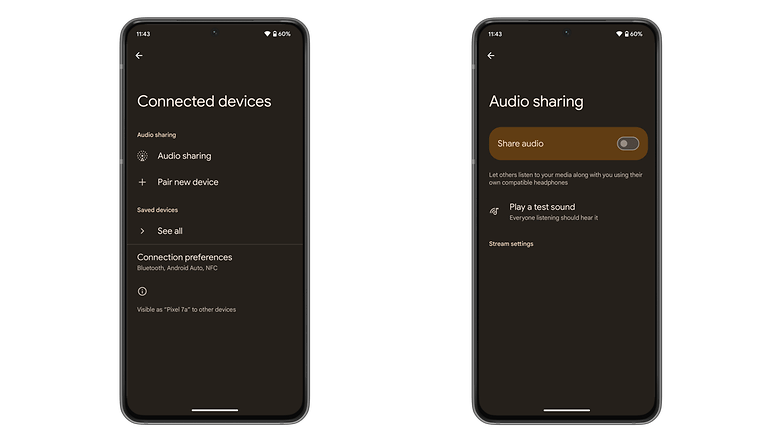
To make it easier to use Auracast, Android 15 adds a new Audio sharing page to the Connected devices page on the Settings app. Activating the option makes it possible to connect multiple headphones, earbuds, and speakers with Auracast support and send audio simultaneously to all of them.
High-quality USB webcam mode
The Android 14 December 2023 Pixel Feature Drop added a USB webcam mode to Pixel phones. And while the image quality was far superior to standard laptop cameras, there was still some room for improvement apparently.
On Android 15, the feature added a small “HD” icon to the preview screen offering the option to turn on a higher-quality mode. Testing the new option on a Pixel 7a phone we didn’t notice any significant improvements. But it is possible that using a more premium smartphone with a high-bandwidth cable offers different results.
Native satellite communication support
Companies in the Android ecosystem scrambled to react after Apple added satellite messaging features to the iPhone 14 models. Some of the alternatives are still live, others were killed before even launching. Satellite communications on Android, however, all share the same issue: Each requires its own app, making them not interoperable.
Android 15 aims to change that by adding native support for satellite connectivity. Apps will be able to check if the device is outside traditional cellular coverage but connected to a satellite. And message apps—including RCS—will be able to switch to NTN (non-terrestrial network, aka satellite) connections to send or receive messages.
Bluetooth Quick Settings changes
The Bluetooth Quick Settings button on the Android 15 preview now works slightly different from previous versions. Instead of turning BT on/off, or serving as a long-press shortcut to the Bluetooth settings screen, tapping the button now opens a small popup with the main options, similar to how the Internet button works for Wi-Fi and mobile data.
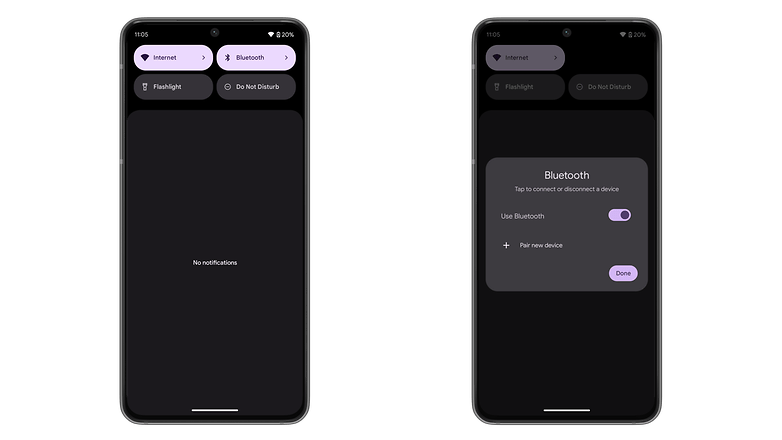
Keyboard vibration toggle in the Settings app
Some keyboard apps offer the option to provide haptic feedback while typing, but each keyboard presents the option in different ways. In Android 15, Google is offering the option natively in the Settings app, by going to Sound & Vibration > Vibration & haptics > Keyboard vibration. The toggle requires that the keyboard app supports the native option but hopefully the main apps will be updated until the Android 15 stable release.
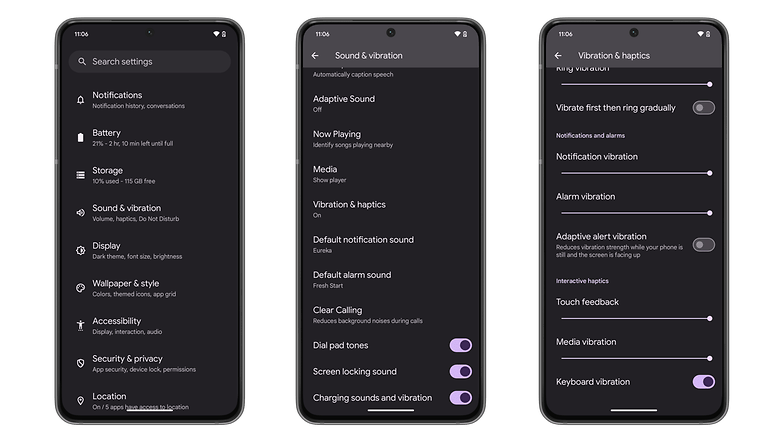
Notification Cooldown
Receiving lots of notifications in quick succession can be annoying at best, and Google is preparing a change in Android 15 to “lower the notification volume when you get many successive notifications from the same app”. The new feature will probably be welcomed by users in many chat groups or with popular social media profiles, for example.
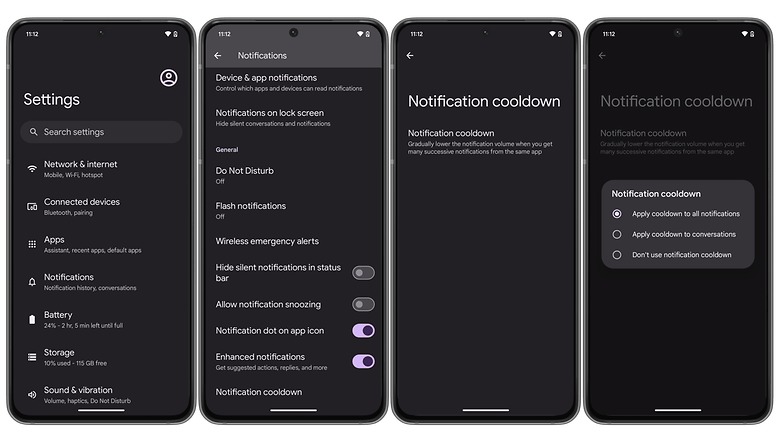
Camera Innovation: Empowering Third-Party Apps
One of the noteworthy enhancements in Android 15 pertains to the transformation of camera access for third-party applications. Imagine Instagram and TikTok delivering the same image and video quality as your phone’s main camera app. That’s becoming a reality.
Android 15 is set to enable full utilization of camera hardware, offering advanced in-app controls. This means you can adjust settings like lighting and color directly within your favorite apps, leveling up your content creation game.
Samsung has already made strides in this area with its Galaxy S24 series. They introduced Ultra HDR photos that shine on social platforms like Instagram, showcasing what’s possible when hardware and software work hand in hand.
Home Screen Efficiency: App Pair Shortcuts
Another cool feature coming with Android 15 is the creation of app pair shortcuts. This lets you launch two apps at once from your home screen—a boon for multitaskers. Whether you’re planning your day with a calendar and email side by side or following a recipe while watching a video, this feature is all about making your phone work smarter for you.
Custom Screen Recording: Tailored Content Capture
Android 15 is also set to introduce a selective screen recording feature. Instead of recording your entire screen, you’ll be able to pick a specific area of an app to capture. This precision allows for more focused and relevant content, whether you’re creating tutorials or showcasing app features.
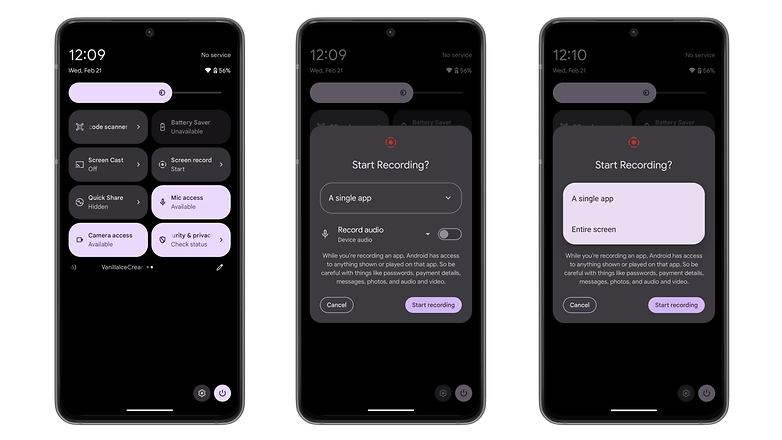
Gaming and Security Enhancements: Smooth and Secure Performance
For the gamers out there, Android 15 is leveling up your experience with new APIs that boost dynamic gaming performance. Expect better thermal management and a smoother gaming experience, eliminating the need for external boosters. On the security front, Android 15 introduces secure file management with custom cryptographic signatures, ensuring your data is safer than ever.
Other changes in development for Android 15
- Large-screen devices will have an option to always display the taskbar.
- Foldable phones will have an option for the default behavior when closing the device: Turn on the cover display automatically, only continue with the same app after swiping up on the external display, or always lock the phone.
- Apps will be able to run on cover screens, even on devices without full support for running apps on the small external display.
- Apps will be able to detect if there is a screen recording task running on the background.
- A new setting will allow apps to inform loudness metadata, and Android 15 will adjust the volume to offer consistent loudness levels in different apps.
- PDF support in apps will have the option to select, search, and edit forms in embedded documents, and also open password-protected files.
The still rumored features of Android 15:
Cloud file selection for the Photo Picker
Revealed by Mishaal Rahman at Android Authority, this small change will allow apps that use the native Photo Picker for sharing media to have access to images stored on Google Photos’ cloud storage, instead of relying only on local files.

Those with large storage phones may not notice much of a difference, but the new feature can help many users with low-storage models that rely on constantly offloading files to online storage. This feature potentially can be distributed through Google Play Services, and may not be tied to Android 15.
Improved Thread and NFC support
Mishaal Rahman also revealed that both Thread (used by Matter) and NFC network integrations on Android will be moved to Project Mainline. That change means in practice that future updates for both protocols on Android will be handled not only by full OS version updates (e.g. going from Android 14 to 15), but also through Google Play Services updates. The same method is used for Bluetooth, UWB, and Wi-Fi support on Android.
That integration is still pending confirmation, but since it was spotted back in May 2023, there is a strong chance it can happen with Android 15.
Better .pkpass file handling
Another background change that should affect a few people directly is a change in how .pkpass files are identified in Android. Also spotted by Rahman, the change consists of giving them a distinct mime type. In practice, Apple Wallet-like apps on Android can better integrate with and handle pkpass files—used for tickets, passes, and other uses—without having to hard-code support like apps do today.
Private Space for hiding apps
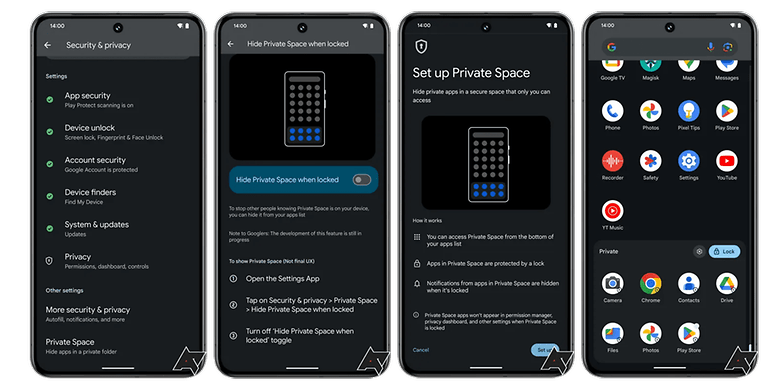
A feature found in many custom skins is apparently under work for Android 15, Private Space creates a list of apps that can be protected by a password or biometric feature and is similar to Samsung’s Secure Folder. Revealed over Android Police by (guess who) Mishaal Rahman, the Space hides apps and their notifications under a password-protected profile, without having to create a whole new user on the device settings.
Android 15: Expected devices
As with every new Android release, Google’s Pixel phones are the first to receive the update. If you’re interested in trying out the Android 15 developer preview, you can now install it on a Pixel 6, 7, or 8 series phone, as well as the Pixel Fold and Pixel Tablet. The official Google Developer page has further information.
Since Android development is now quite predictable, we’ve created a guide listing the devices eligible for the new Android 15 update—I recommend checking it to see if your device is included.
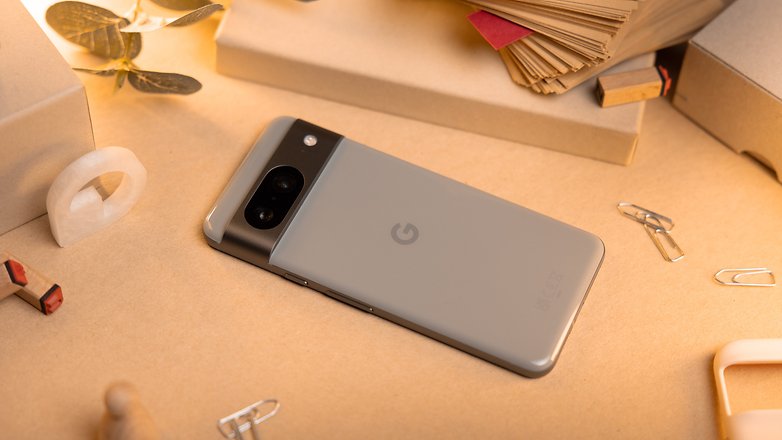
Android releases often coincide with the launch of a new Pixel generation. Therefore, you can expect the Pixel 9 family to debut with the new Android version. According to Google’s update policy, Android 15 should be available for Pixel 5a and newer models.
The availability of the update for other brands and models will vary greatly. We suggest looking at our guide on the update policies of different manufacturers for more details.
As we’ve navigated through the anticipated wonders of Android 15, what features spark your imagination? Share your thoughts and join the conversation below. How do you envision Android 15 enhancing your digital life?
Article updated in April 2024 with Android 15 DP2 new features. Comments prior to the update were kept and may seem out of context.






